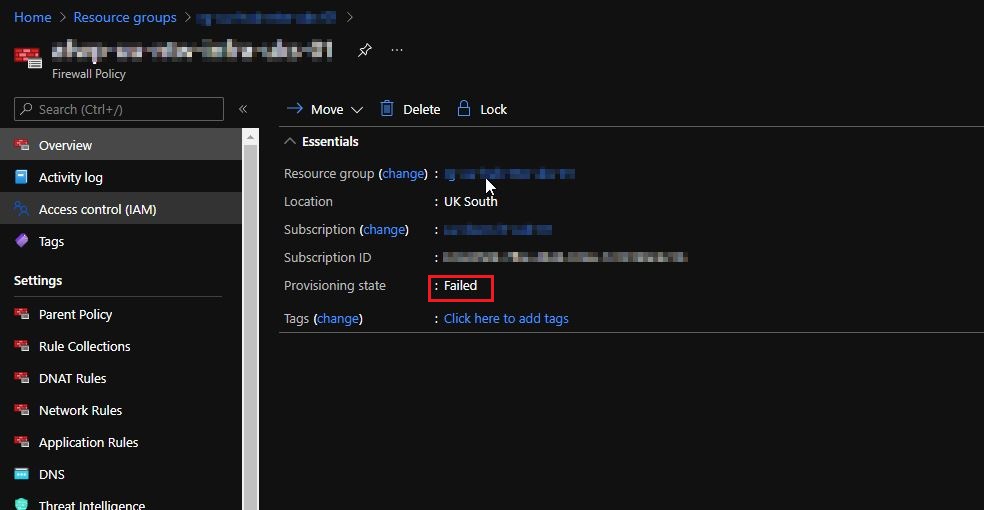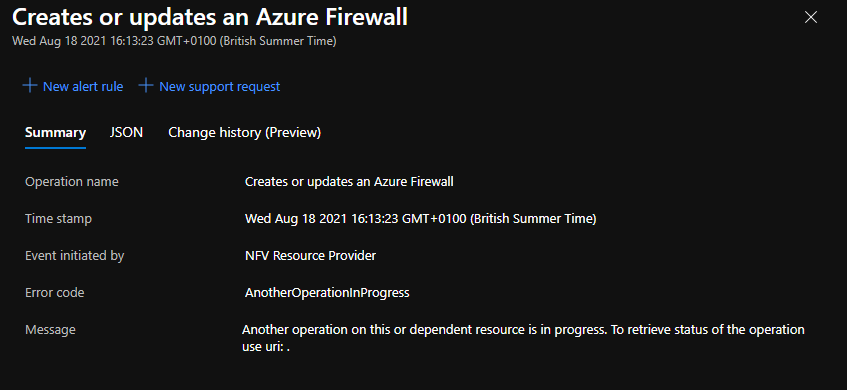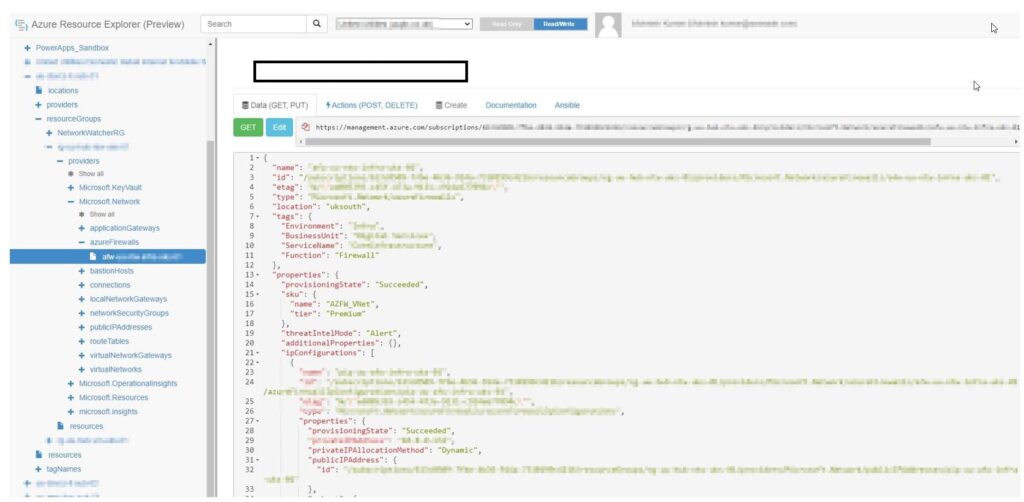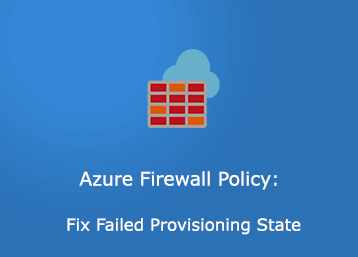Issue
On a recent project, a routine change was made to one of the Azure Firewall rules. This resulted in the provisioning state to change from “Succeeded” to “Failed” on the Firewall Policy:

After inspecting the logs, we can see that a Microsoft service caused the failure:

When the firewall policy manager is in this failed state, there is no guarantee that the latest firewall rules and changes are active.
Method 1 Fix: Utilise Azure Resource Manager
The first step to resolve this issue is to navigate to: https://resources.azure.com. You will then need to drill down to the resource group where Azure Firewall is situated and select the problematic firewall. See below:

- Once the firewall in question is selected, click on Get to receive an updated state.
- Click on Edit.
- Click on Put.
- Check the Firewall policy state back in the Azure portal to see if provisioning state has changed. If not, move to method 2 below.
Method 2 Fix: Update a Firewall Rule
If the Provisioning state is still showing as Failed, then simply make any change to one of the Firewall rules. For instance, make a minor name change to one of the Firewall rules, then save the changes. You will find that this forces the provisioning state to succeeded.
Method 3 Fix: Open Support Ticket with Microsoft
If Method 2 does not resolve the error, then you will need to open up a support ticket with Microsoft who will engage the appropriate team to fix the problem. This issue is also a documented and known bug as highlighted here.
Azure Firewall is a managed service and once updates/changes are made, multiple nodes in the back end need to be updated. This is why committing changes is a slow process. I found that if you’re making multiple changes to firewall rules, then as a rule of thumb, you should wait 2 minutes between changes. Making multiple quick fire changes can also trigger this problem. As Azure Firewall becomes a more mature product, I am hoping this will no longer be a concern.


a flavour – perhaps easier – of one of the methods
in powershell
Get-AzFirewallPolicy… | Set-AzFirewallPolicy